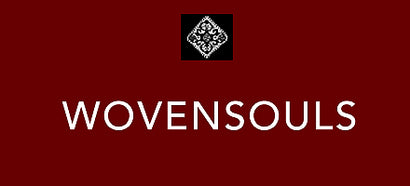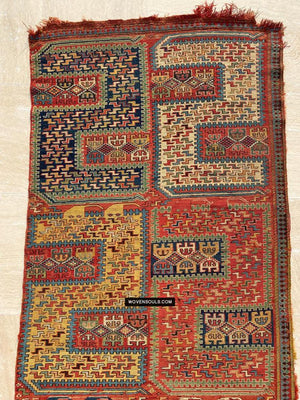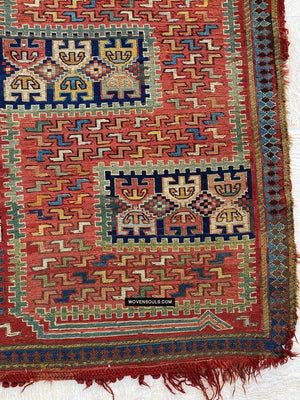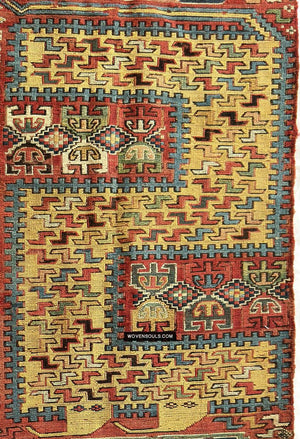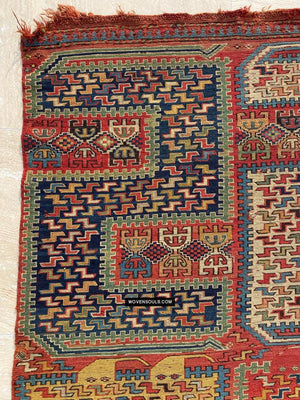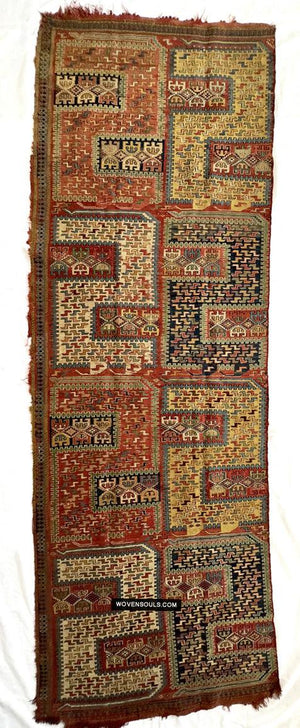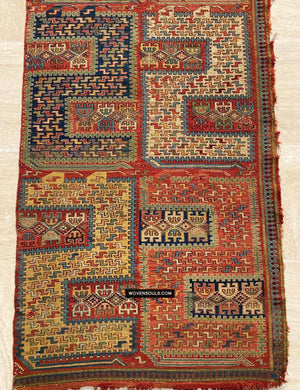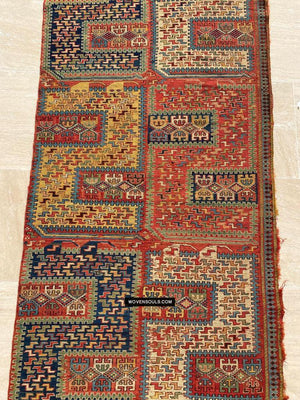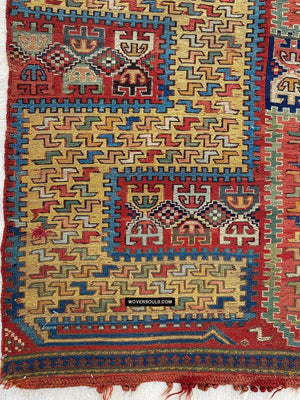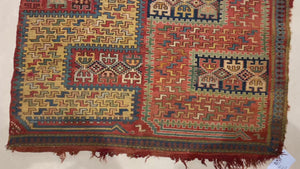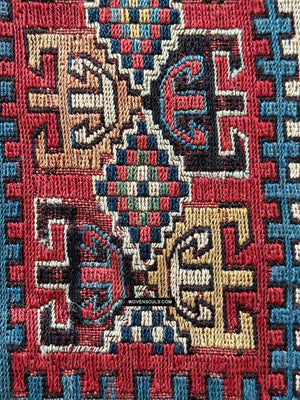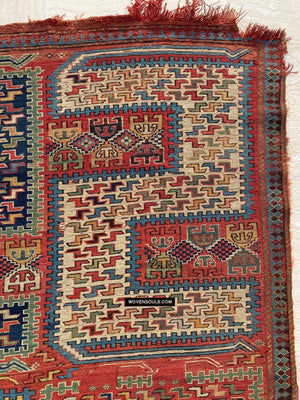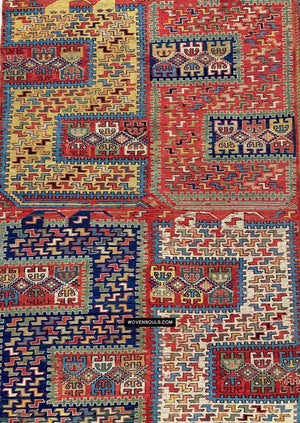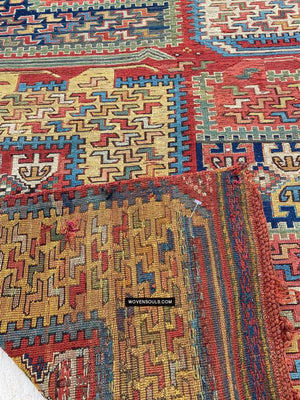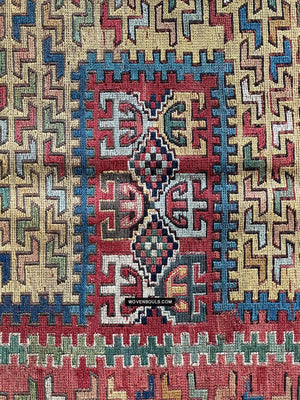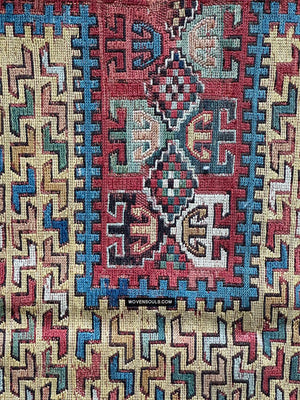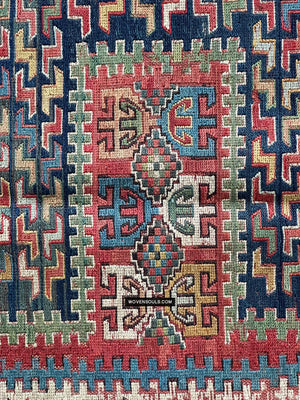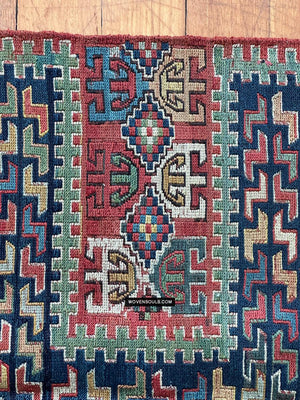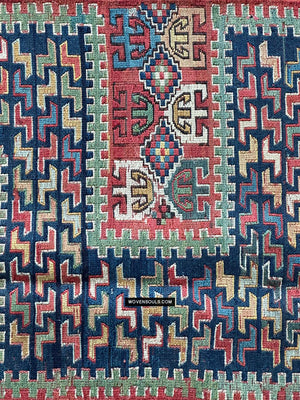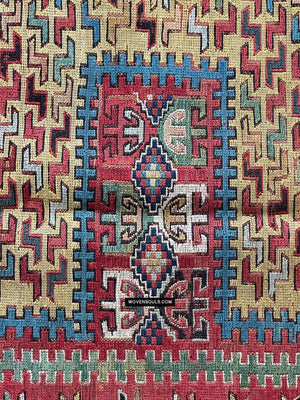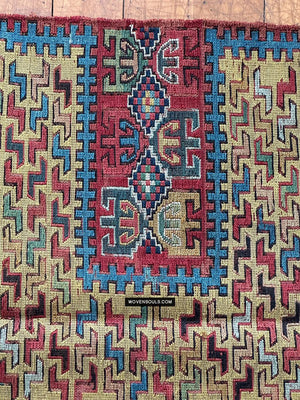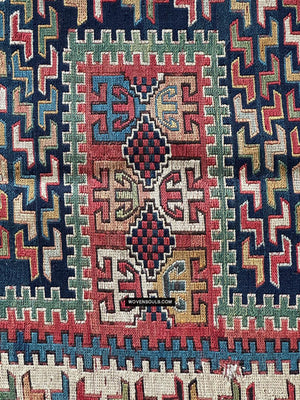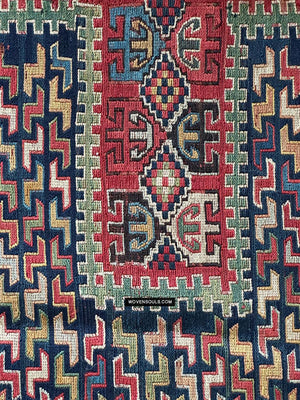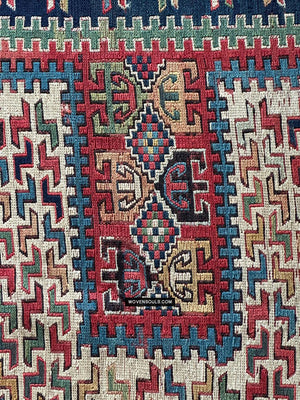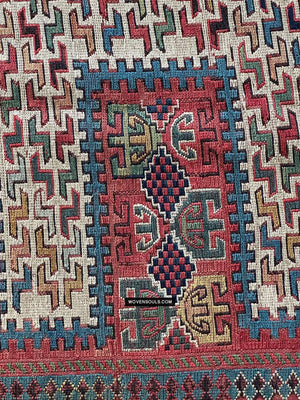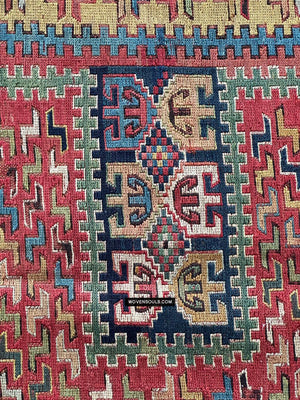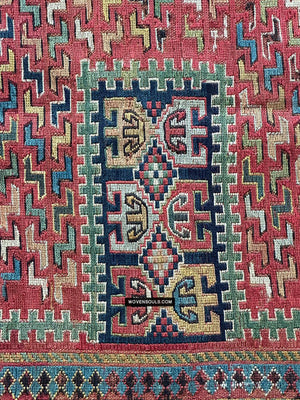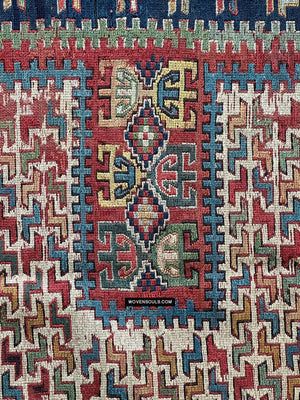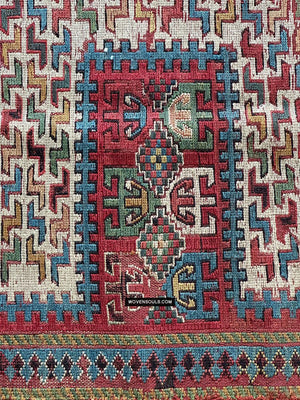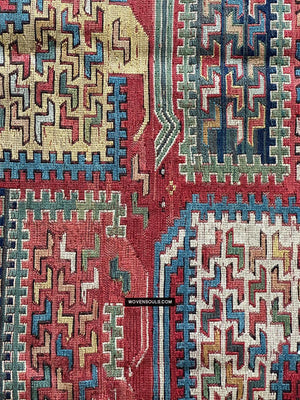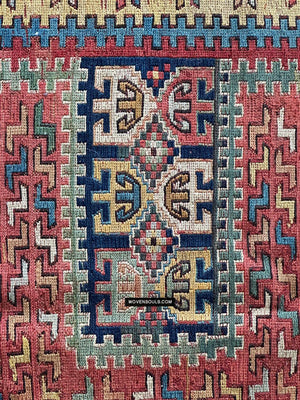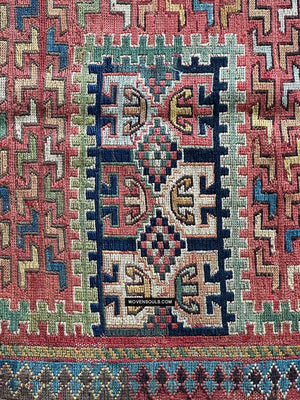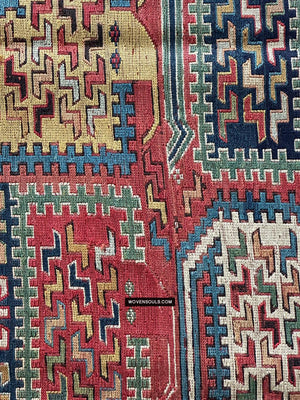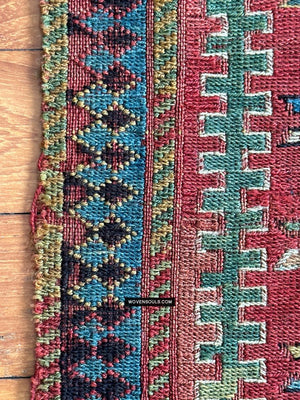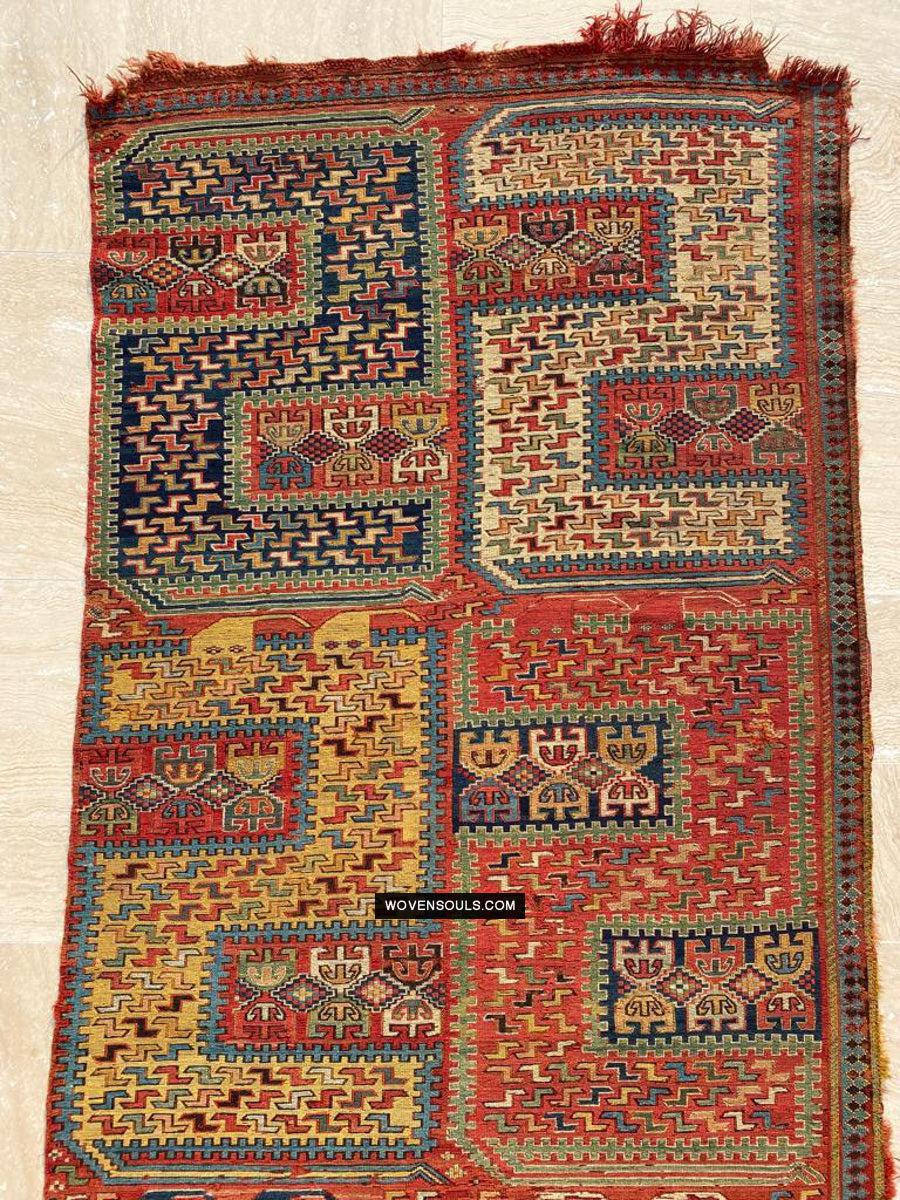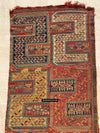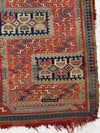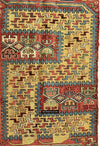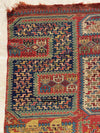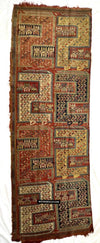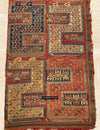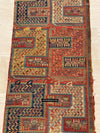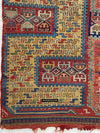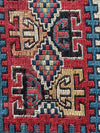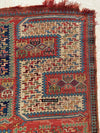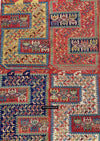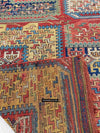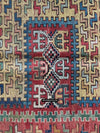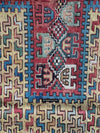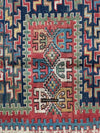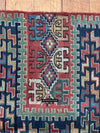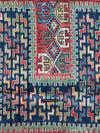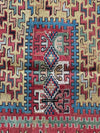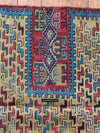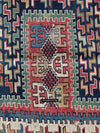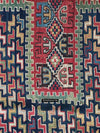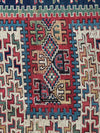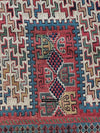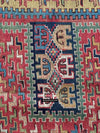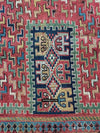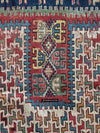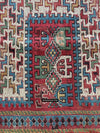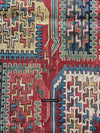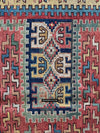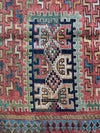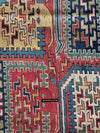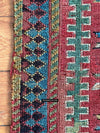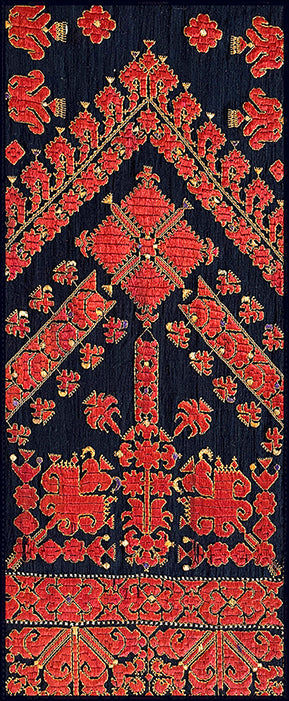Your Cart is Empty
1712 Antique Caucasian Yellow Zileh Sileh Soumac
Antique Gorgeous Zileh / Sileh fragment
These soumakh textiles with stylised dragons are traditionally referred to as Sileh (Zileh or Zili) in early European literature, a term that is also associated with the technique.
This category is fascinating and colors in this example are extremely appealing.
The noteworthy features:
We see 8 dragons in four colors - two each in white & blue (both common colors), two in yellow which is rare and two in red.
a) In most examples the little 's' motifs within each dragon all face the same direction. In the wovensouls example, the direction of the little motifs alternates in each row. Further, the rows are rather casually laid out without precision making this a freer rendition than many other examples that are stiff renditions.
b) Note the attention to detail in the little 's' motifs - the border of each is of a different color and contrasts with the color of the 's' motif as well as the background. We see borders in red, white, dark blue (or black), light blue, green and yellow in a joyous burst of creativity. Yello with blue, yellow with red, yellow with white ...etc etc ... this could well be a lesson in permutations & combinations.
Now coming to the two important features of 1712 that make it extraordinary:
c) The use of 4 colors is extraordinary and in my research online, I have not yet come across another with more than TWO colors usually blue and white and in a rare case blue and yellow. So the use of FOUR colors is extraordinary.
d) In no examples have I seen a RED dragon. I am no expert on this group but red seems to me to be extremely extremely rare. [I would have liked to say 'never-seen-before' but would probably be false as I have not seen all zilehs made in the history of time ....
In my opinion, c & d make the Wovensouls Zileh very special.
Estimated to be from the early-mid 1800s.
Corroded blacks. Some wear. One edge is frayed.
Photos have been taken in two lighting conditions to give a fair idea of the real colors.
Often woven in two panels they are stitched together longitudinally to form the complete woven artwork. This is a listing for a single panel or one half.
93x226 cm
PRICE ON REQUEST
$$$$$
Antique Caucasian Yellow Zileh / Sileh Embroidered Flatweave Soumac Rug
***
This item has spent a lifetime being used for the purpose of its creation with the original artist/user.Signs of this life lived heartily may be present on the piece in the form of stains, thread loss, loose threads, holes, tears, color run, repairs and other imperfections.Therefore the condition must be assumed to be “not” perfect. More photos of such imperfections will be provided on request.
***
.
Like it? Share it with friends on Facebook!
.......................................................................................................................
